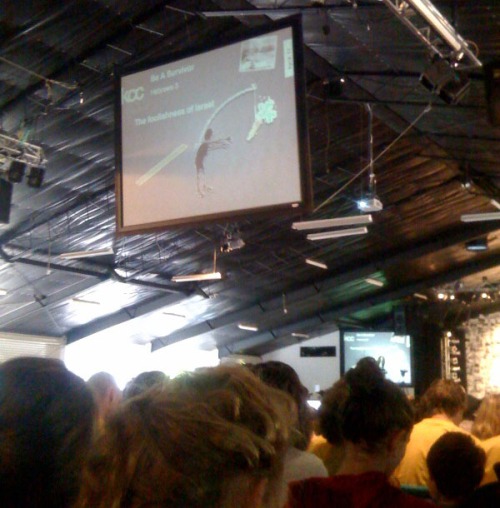I was at at 13:3 youth event last week. It was excellent. I’m so glad we took our youth group, even if the turnout wasn’t excellent (the starting time was a little prohibitive – we had to leave at 6:15 and we usually start at 7:30pm).
I’m super impressed by how Voice of the Martyrs has launched this initiative. It is engaging, well designed, has a solid presence on social media on Facebook (not so much Twitter – but how many 15-year-olds do you know who care about Twitter?) – well, ok, fine. I love the design. It gives me so much joy to see a group that knows that design will make a difference to communicating the message to their demographic. Which in this case, is about the persecuted church, and telling it to teenagers.
The event we went to was SO enthusiastically hosted by MBM youth and the band was great (if loud – yes, I’m old). The video spots were well produced, the speaker was inspiring and understandable.
And there was a countdown video just as it started.
It worked, ok? It got everyone involved in counting down the seconds till the event started, and they all yelled and applauded and it created atmosphere and unity and a sense of being part of something big. And I couldn’t help but think, if I was a visitor, or a year 7 kid, would I be worried at all of the people yelling around me, or excited? Would this be helpful, or just weird?
One of my concerns was we watched a video, sang two songs, and then the youth pastor got up to say welcome, and prayed “to kick us off”. But, what had we been doing up to that point?
Almost every youth event you go to will make use of a countdown video. There are whole categories and stacks of resources – some of them free – available. WorshipHouse Media suggests the purpose of a countdown video is:
“Countdowns are a great way to get your congregation to their seats on time, as well as build excitement as the service nears. Countdowns are a great service starter for “Big Church” as well as your Children’s and Youth services…”
Countdowns are about excitement, expectation and atmosphere. But countdowns are also about entertainment, performance and efficiency. Does this make church more like a concert or an experience than about God’s people meeting together?
Interestingly, it seems no one is talking about this critically. It doesn’t seem like people consider whether or not a countdown video is achieving what they should want it to. (On further research, the people talking about it are the ones selling ‘Church Media’).
Does it get the youth (or congregation) excited? Yes. Does it mean we start on time? Yes. Then do it. Really?
I enjoy a good countdown video. I’ve even made them myself (for other youth groups). But do they encourage community? Do they get people to talk to each other? Do they encourage reflection on why we come to church, what we are there to do, focus us more on God?
[I’m not a gigantic fan of hillsong, but at least their video and intro sequences are all about the experience and are not messageless voids of ever decreasing numbers. I realise this is a conference intro, not a countdown video. And I think people are not concerned enough about how both work together.]
Or perhaps more critically, does it build on the idea that we must be constantly entertained? Does it contribute to the endless screen media we see, for no purpose than to fill the space? Does it remove space for awkwardness and humanness and transparency in our services? Does it create endless work in coming up with something new and engaging and fresh? Worse, is it becoming a church cliche (does your work meeting have a countdown video? What about your uni lecture? Ok, so fair enough – U2 have one…)
Have we appropriated this trend without due consideration?



